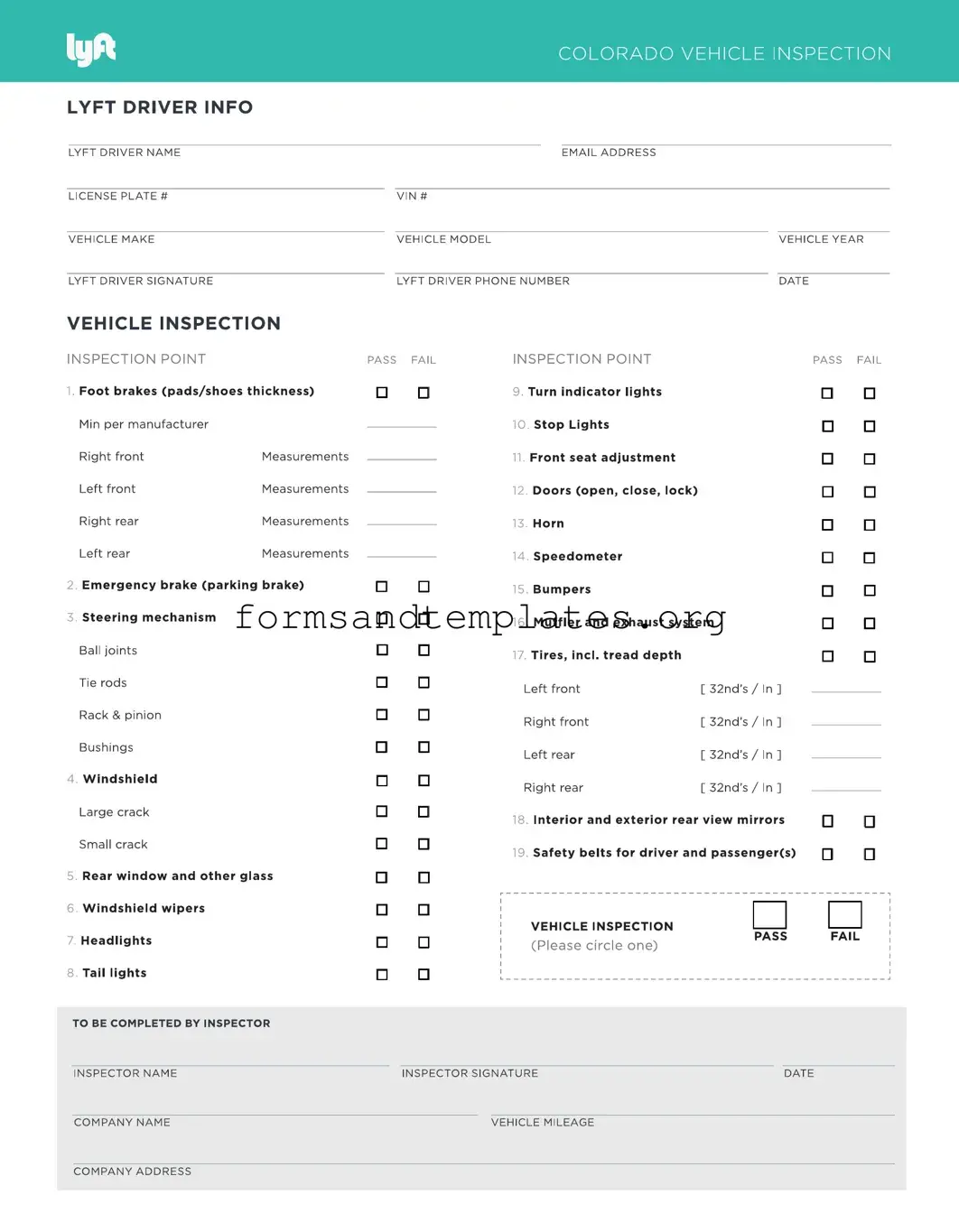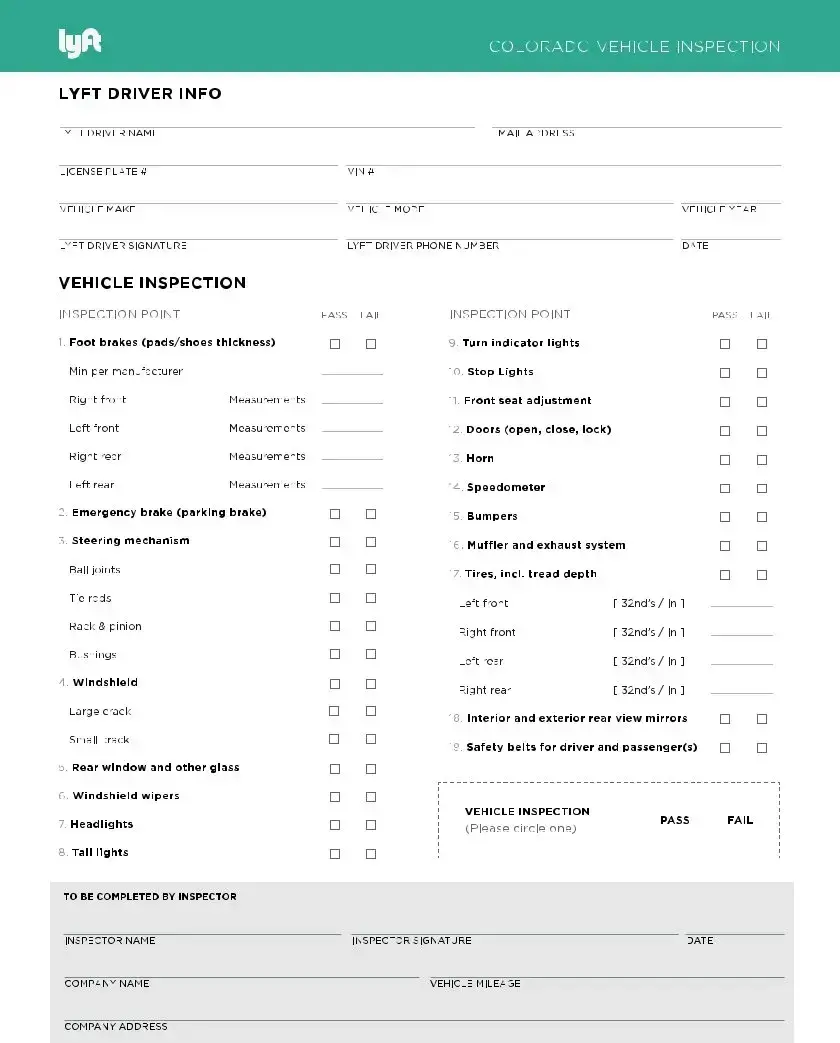For drivers looking to partner with Lyft, understanding the Lyft Inspection form is essential to ensure a smooth onboarding process. This form plays a crucial role in maintaining safety and compliance standards for both drivers and passengers. It typically requires a comprehensive vehicle inspection conducted by a certified mechanic, who will assess various aspects of the car, including brakes, lights, tires, and overall safety features. Additionally, drivers must provide proof of insurance and registration, confirming that their vehicle meets Lyft's requirements. Completing this inspection not only helps in securing approval to drive for Lyft but also fosters a commitment to passenger safety. By adhering to these guidelines, drivers can contribute to a reliable and trustworthy rideshare experience for everyone involved.

